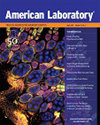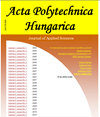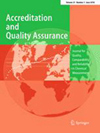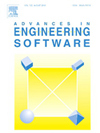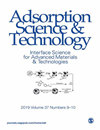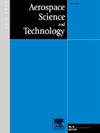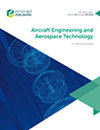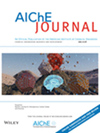期刊简介
Biosensors are defined as analytical devices incorporating a biological material, a biologically derived material or a biomimic intimately associated with or integrated within a physicochemical transducer or transducing microsystem, which may be optical, electrochemical, thermometric, piezoelectric, magnetic or micromechanical (Turner et al., 1987; Turner, 1989). Biosensors & Bioelectronics is the principal international journal devoted to research, design, development and application of biosensors and bioelectronics. It is an interdisciplinary journal serving professionals with an interest in the exploitation of biological materials and designs in novel diagnostic and electronic devices including sensors, DNA chips, electronic noses, lab-on-a-chip and μ-TAS. Biosensors usually yield a digital electronic signal which is proportional to the concentration of a specific analyte or group of analytes. While the signal may in principle be continuous, devices can be configured to yield single measurements to meet specific market requirements. Examples of Biosensors include immunosensors, enzyme-based biosensors, organism- and whole cell-based biosensors. They have been applied to a wide variety of analytical problems including uses in medicine, biomedical research, drug discovery, the environment, food, process industries, security and defence. The design and study of molecular and supramolecular structures with molecular biorecognition and biomimetic properties for use in analytical devices is also included within the scope of the journal. Here the focus is on the complementary intersection between molecular recognition, nanotechnology, molecular imprinting and supramolecular chemistry to improve the analytical performance and robustness of devices.
生物传感器被定义为结合了生物材料、生物衍生材料或仿生材料的分析装置,所述生物材料、生物衍生材料或仿生材料与物理化学转换器或转换微系统密切相关或集成在物理化学转换器或转换微系统内,所述物理化学转换器或转换微系统可以是光学的、电化学的、测温的、压电的、磁性的或微机械的(Turner等人,1987年;特纳,1989年)。《生物传感器与生物电子学》是国际上主要的生物传感器和生物电子学研究、设计、开发和应用的期刊。它是一个跨学科的期刊,服务于对生物材料开发和新型诊断和电子设备设计感兴趣的专业人士,包括传感器、DNA芯片、电子鼻、芯片实验室和μ-TAS。生物传感器通常产生与特定分析物或分析物组的浓度成比例的数字电子信号。虽然信号原则上可以是连续的,但是设备可以被配置为产生单次测量以满足特定的市场需求。生物传感器的实例包括免疫传感器、基于酶的生物传感器、基于生物体和全细胞的生物传感器。它们已被广泛应用于各种分析问题,包括在医学、生物医学研究、药物发现、环境、食品、加工工业、安全和国防中的应用。具有分子生物识别和仿生特性的分子和超分子结构在分析设备中的设计和研究也包括在该杂志的范围内。重点介绍了分子识别技术、纳米技术、分子印迹技术和超分子化学技术的互补交叉,以提高器件的分析性能和稳定性。
《BIOSENSORS & BIOELECTRONICS》期刊已被查看: 次

